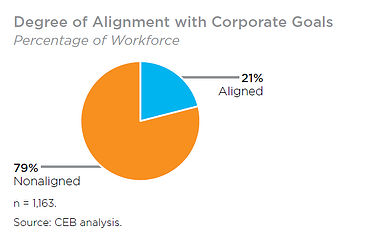 In part one of our Big Data and HR series we explained what Big Data is and how it can be an extremely powerful tool to develop insight into the future and ultimately, improve HR decision making. In Big Data and Predictive HR Decision Making Part 2, we break things down for you further and describe some of the analytics that you can generate. Read further and discover how to bring insights to the C-suite that will undoubtedly impress.
In part one of our Big Data and HR series we explained what Big Data is and how it can be an extremely powerful tool to develop insight into the future and ultimately, improve HR decision making. In Big Data and Predictive HR Decision Making Part 2, we break things down for you further and describe some of the analytics that you can generate. Read further and discover how to bring insights to the C-suite that will undoubtedly impress.
Turnover and Retention
Depending on the depth of your data, you may be able to predict future turnover in specific functions, business units, or geographies by looking at factors like commute time, time since last role change, and performance over time. This means you can scale hiring efforts accordingly reducing empty desk time and panic hiring. This will lower cost of hiring, increase quality hires, and improved corporate performance. You can scale hiring, or you can target retention. Find out which groups of employees are at high risk of leaving in the future. Then focus retention activities on at-risk teams or departments by reallocating resources from areas where retentions strategies are less necessary.
Alignment with Objectives
 Aligning talent development and corporate strategy is difficult. Often it seems corporate goals are large, unwieldy and difficult to grasp at the department level — let alone at the individual level. In the 2014 study, Rethinking Performance Management by The Corporate Executive Board, authors explain that the degree of alignment with corporate goals is woefully low. It doesn’t have to be though. Big data will help identify significant gaps so you can rework role descriptions and tasks to bring individual, team and department goals into alignment with corporate strategies.
Aligning talent development and corporate strategy is difficult. Often it seems corporate goals are large, unwieldy and difficult to grasp at the department level — let alone at the individual level. In the 2014 study, Rethinking Performance Management by The Corporate Executive Board, authors explain that the degree of alignment with corporate goals is woefully low. It doesn’t have to be though. Big data will help identify significant gaps so you can rework role descriptions and tasks to bring individual, team and department goals into alignment with corporate strategies.
Performance through and across roles
By looking at average performance metrics over time, you might spot a particular department or role that is underperforming. Armed with facts, you can devise a turnaround plan. For example, Electronics retailer Best Buy can quantify the annual increase in income as related to employee engagement. For every 1% increase in employee engagement, the company can expect a $10,000,000 increase in income.
Profit Prophets
Can you find metrics that link staffing levels to profit? Or training and development expenditures with profit? With Big Data you are capable of running analyses that combine revenue data with staffing over time. Using predictive models, you can identify areas in which a staffing investment of $1 million could produce talent capable of increasing revenues by $5 million in the coming year.
Test Assumptions
Some organizations think that by allowing people to work from home, they save on infrastructure and other operational costs. The real question is: Are there offsetting performance losses, resulting in lower revenues that might dwarf the savings from telecommuting? CEO Marissa Meyer had more than just a hunch when she issued the edict that Yahoo employees could no longer work from home. Armed with data, you can test assumptions about your HR practices.
Detect the Need for Change
In marketing, ‘sentiment monitoring’ is a commonly used approach to identify what people think about companies and or their products and services. Human resource professionals can use the same approach to monitor social networks to understand what employees think about the organization. It may be that many of your middle managers are expressing frustration with miscommunication. In this case, you can organize training to help them reduce conflict and improve communication.
On Monday, we peel back further layers of the onion and explore ways to use Big Data for profiling talent in your organization. Profiling is used to identify employees who are likely to succeed in leadership roles, leave or cause harm to the organization. To being utilizing Big Data for predictive decision making ensure that you have a HR and/or talent management system in place. For a free demo of one of the world’s leading open source talent management system, fill out the form here.




